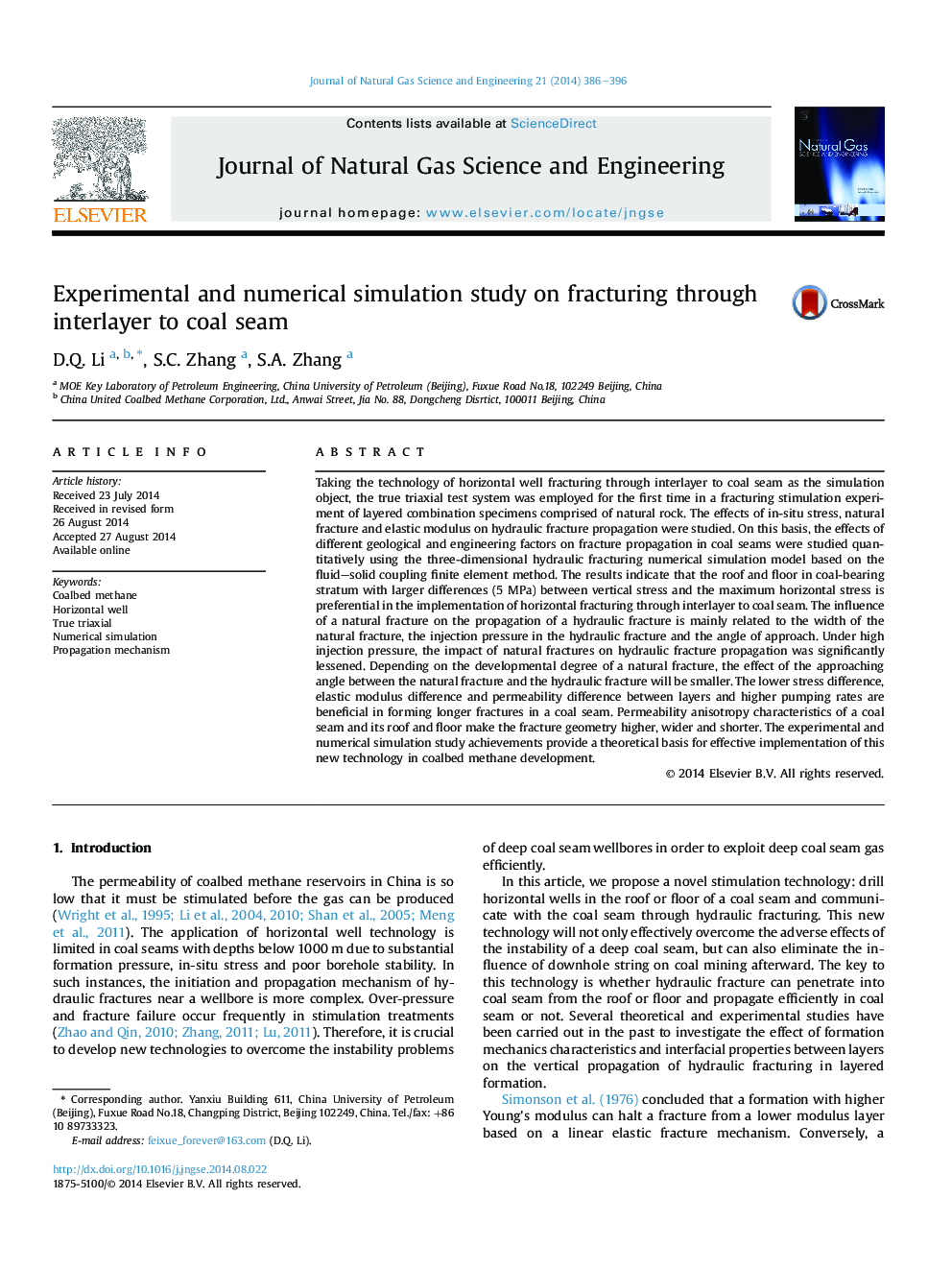| Article ID | Journal | Published Year | Pages | File Type |
|---|---|---|---|---|
| 8129215 | Journal of Natural Gas Science and Engineering | 2014 | 11 Pages |
Abstract
Taking the technology of horizontal well fracturing through interlayer to coal seam as the simulation object, the true triaxial test system was employed for the first time in a fracturing stimulation experiment of layered combination specimens comprised of natural rock. The effects of in-situ stress, natural fracture and elastic modulus on hydraulic fracture propagation were studied. On this basis, the effects of different geological and engineering factors on fracture propagation in coal seams were studied quantitatively using the three-dimensional hydraulic fracturing numerical simulation model based on the fluid-solid coupling finite element method. The results indicate that the roof and floor in coal-bearing stratum with larger differences (5Â MPa) between vertical stress and the maximum horizontal stress is preferential in the implementation of horizontal fracturing through interlayer to coal seam. The influence of a natural fracture on the propagation of a hydraulic fracture is mainly related to the width of the natural fracture, the injection pressure in the hydraulic fracture and the angle of approach. Under high injection pressure, the impact of natural fractures on hydraulic fracture propagation was significantly lessened. Depending on the developmental degree of a natural fracture, the effect of the approaching angle between the natural fracture and the hydraulic fracture will be smaller. The lower stress difference, elastic modulus difference and permeability difference between layers and higher pumping rates are beneficial in forming longer fractures in a coal seam. Permeability anisotropy characteristics of a coal seam and its roof and floor make the fracture geometry higher, wider and shorter. The experimental and numerical simulation study achievements provide a theoretical basis for effective implementation of this new technology in coalbed methane development.
Related Topics
Physical Sciences and Engineering
Earth and Planetary Sciences
Earth and Planetary Sciences (General)
Authors
D.Q. Li, S.C. Zhang, S.A. Zhang,
